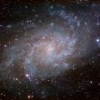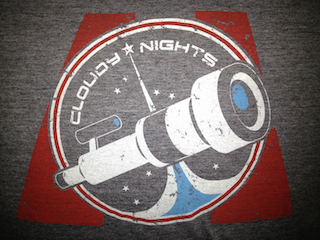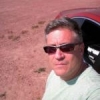It was a big leap for me, not so much due to the cost, but mostly due to the learning curve. Not only was there a huge learning curve for the mount, but I started from scratch knowing little to nothing about astronomy, astrophotography, mounts, collimation, cameras, filter wheels and most of all, image processing.
I kid you not; there were no gradients in my knowledge, just pure green (me)!
Enough of that, let's talk about the mount.
First, I encourage you to read my review of the ASA DDM85XL-S Direct Drive GEM
It's not the best writing in the world, but I think it gets the point across...this is an excellent mount for astrophotography!
So I find myself, a year and a half later, becoming quite knowledgeable on this mount...and it keeps getting better.
I recently upgraded my Autoslew software that controls the mount with version 5.1.0.0 and the plate solving software to Sequence version 9 by Dipl. Phys. Dr. Philipp Keller.
Dr. Keller has made major improvements to the software, specifically in the Advanced Pointing model of Autoslew and the Multipoint Local Precision Tracking portion of Sequence.
What seemed like required an advanced degree in astrophysics to operate and understand can now be down quite easily by a greenhorn like me. All of the advanced pointing and modeling functions are now completely automated.
I am now consistently able to achieve polar alignments equal to or less than 6 arcseconds in both axis in about a half hour after setting up the mount and then create a substantial pointing model within another 30-45 minutes. Once completed, I can select an object, create a MLPT model in 2-12 minutes depending upon the length of my exposures and the number of iterations I select and then I can achieve 20-30 minute subs with no periodic error, no backlash and most importantly, no guiding.
The pointing accuracy is very good but it is the tracking capabilities that are absolutely amazing.
When I am done imaging for the night, I simply park the scope, cover it and it's ready for the next evening of imaging.
If I need to shut off the power or remove the laptop for any reason, that's cool too. I make sure I point the scope at a star in the eastern horizon, synch to that star and then Autoslew calculates the angular offset between the synched star and the encoders home position. It then uses your coordinates, date and time and that angular offset to determine exactly where to point after you power up and perform a HomeFind. In other words, it never forgets where it is positioned once a 30 second home find is performed on power up.
Here are some images of the mount and some taken using the mount. They are a combination of 10 and 20 minutes subs with no periodic error, no backlash and most importantly, no guiding.



































